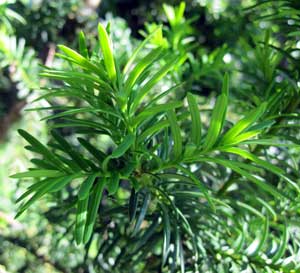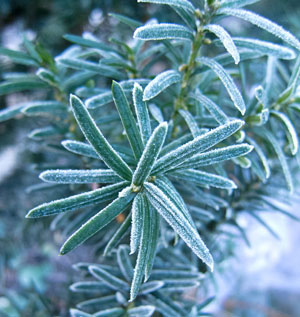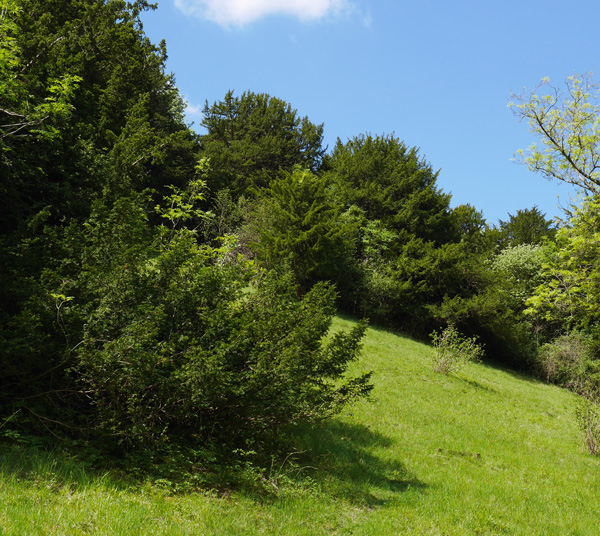Yew
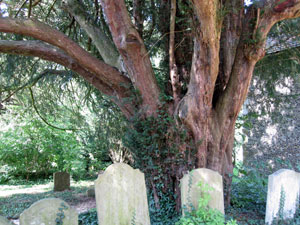
In the UK, there are three native conifers: the Juniper, the Scots Pine and the Yew (Taxus baccata). The Yew is generally slow growing and can be of great age. Some Yews (e.g. the Fortingall Yew), are probably thousands of years old. Estimating the age of a Yew can be difficult as they often develop hollow trunks, which makes dating by annual rings next to impossible. The trunks may also fill with aerial roots that grow down from the crown.
Yew is to be found naturally on many soil types, though it is perhaps more common on chalk in the south east and limestone in the north. It is sometimes found in the shade of oak woodlands. During the last 300 years, it has been widely planted in parks and gardens - as a form of hedging. Ancient or veteran trees are often associated with church yards, and have been connected with other sacred places. One site that offers a lot of information about the Yew is the Ancient Yew Group.
Leaf
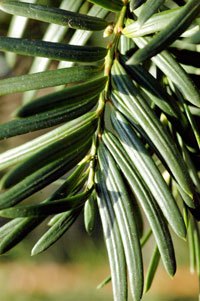
The leaves of there Yew are long and narrow – technically described as lanceolate, that is like a spear or lance, tapering to a point at the tip. They vary between 1 and 4 centimetres in length, and are 2 to 3 millimetres wide. On many shoots they give the appearance of being arranged in two rows either sides of the stem, but on upright stems the spiral arrangement of the leaves is more obvious. On horizontal, ‘flattened’ stems the base of each leaf twists so that the leaves have the 'two row' appearance. The leaves are generally a dark green colour, sometimes a blue-green though the underside of the leaf is 'lighter' in colour.
Note : Like nearly every part of the tree, the leaves are poisonous containing the taxine alkaloids.
Chemicals extracted from the leaves are used in the treatment of certain forms of cancer, where the toxic effects of the chemical slows down the multiplication of cancer cells. There is an interesting article on obtaining these chemicals and their use : here
Buds, Bark & Stem
As the tree grows and mature, the stem (bole or trunk) develops a distinctive character. The bark is relatively thin, with a brown scaly appearance, small flakes may be seen along the stem. As the tree grows and matures, the trunk may develop furrows and ridges.
The wood of the tree has had a number of uses through history and pre-history. The earliest known use is as a thrusting spear from the Hoxnian inter-glacial period, which is many hundreds of thousands of years ago! The burial ship at Sutton Hoo contained a Yew bucket; and the wood was much favoured in Norman times for the making of long bows. Its use in bow making may pre-date this by some thousands of years as evidenced by the ‘Ice Man’ found in the Alps. It has been, and is still used, in furniture making and is much favoured by wood turners. Its water resistant qualities mean that it has been used for house foundations in places like Venice.
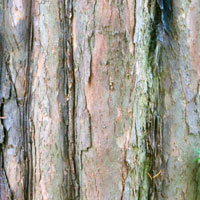
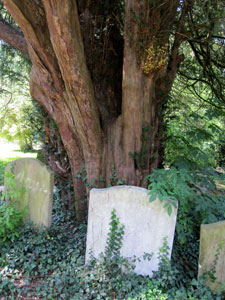
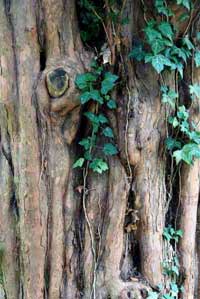
Flowers and Fruits
The Yew tree is dioecious (that is, it has male and female forms). It can take many years for a female tree to bear flowers or fruit. Male flowers or rather cones shed their pollen in early spring. Female trees are most readily recognised when they bear their red fruits. Each cone is modified to contain a single seed / fruit. The outer part of the fruit is a red, fleshy cup or aril – it looks a bit like a berry at first sight, which attracts birds. The aril
is the only part of the plant that is non-toxic. Within the fleshy aril is a hard brown nut, which is distributed by birds such as thrushes and waxwings . The hard seed passes through their digestive system unharmed. Like the leaves, the seeds are highly toxic.
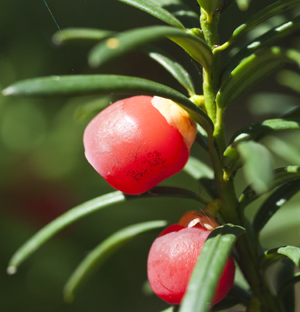
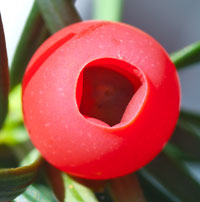
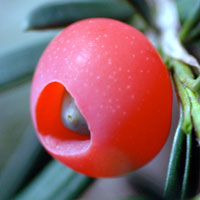
Winter Twigs
As the yew is ‘evergreen’, it does not change its appearance greatly over the seasons. It does shed leaves but not on a seasonal basis. They are replaced throughout the growing season. Leaves are lost as they age, or subject to attack by various pests from insects to fungi. The tree can assume a broadly conical, elongated triangular shape, but can also be cylindrical or flattened and spreading.
